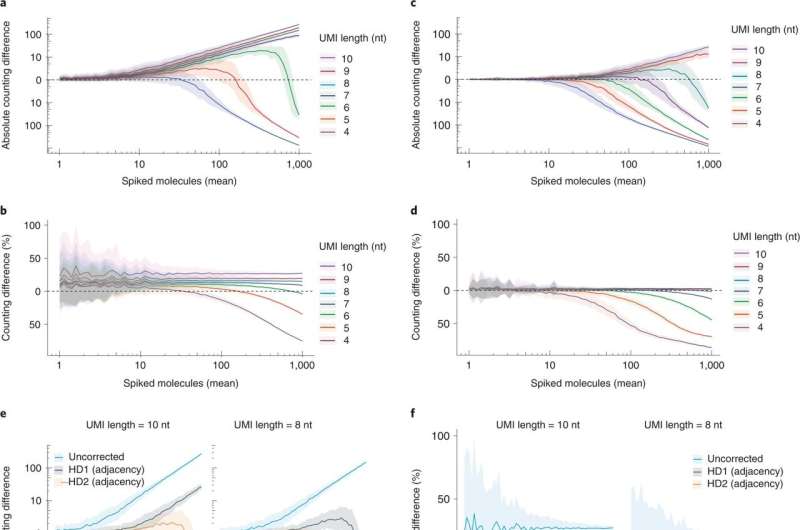New gold-standard quality control tool for RNA sequencing in single cells

Researchers at Karolinska Institutet are introducing a new gold standard quality-control tool for counting of mRNA molecules in single cell sequencing. The new method is described in the journal Nature Methods.
Professor Rickard Sandberg along with co-authors Christoph Ziegenhain, Gert-Jan Hendriks, Michael Hagemann-Jensen from Rickard Sandberg's lab at the Department of Cell and Molecular Biology are introducing "molecular spikes," a new gold-standard quality control tool for single-cell RNA sequencing experiments.
Molecular spikes are a synthetic RNA that can be spiked-in to library preparations from single cells with inbuilt labels to distinguish individual molecules ("Unique Molecular Identifiers" or UMIs). These spike-in controls provide for the first time a ground-truth control to validate both experimental and computation methods of molecule counting in single-cells.
"We use these spike-ins to confirm that widely used methods accurately count RNA molecules. Simultaneously, we show that another recently published method suffers from severe overcounting as a result of a problem during PCR," says Rickard Sandberg.
Better control of experiments
RNA molecule counting strategies are ubiquitous in single-cell experiments and essential to the conclusions drawn in many of these experiments. There are many experimental methods to achieve incorporation of unique molecular identifiers. Additionally, computational methods to robustly count these UMIs are needed because of errors arising in PCR and sequencing. However, the accuracy and validity of these approaches have been challenging to quantify. "Using the molecular spikes that we introduce in this study, scientists can now control their experiments and computational approaches and confirm their accuracy and we also provide a solution to 'rescue' problematic experiments."
"The spike-ins were produced by in vitro transcription of RNA from plasmids encoding exogenous and distinct RNA sequences. Into these plasmids, we cloned a series of highly diverse inserts containing further barcodes and UMI sequences. We then mixed these plasmids libraries and performed in vitro transcription to produce the final pool of spike RNA encoding a total of 264 transcripts corresponding to more than 75 million unique UMIs. We exhaustively sequenced the resulting spike RNA library to quantify the relative abundances of all spike sequences."
"Then we used these molecular spikes in a series of single-cell transcriptomics experiments scrutinize counting abilities across methods, and improved manners to normalize data based on these spikes."
Available to other researchers
"We will provide the molecular spike RNAs free of charge to any academic lab that are interested. The use of molecular spikes in single-cell experiments can identify experimental errors and help improve reproducibility in complex single-cell experiments. We would like to emphasize that especially in single-cell method development, the use of molecular spikes is crucial since the metrics that are typically used in method development actually reward experimental errors resulting in overcounting."
More information: Christoph Ziegenhain et al, Molecular spikes: a gold standard for single-cell RNA counting, Nature Methods (2022). DOI: 10.1038/s41592-022-01446-x
Journal information: Nature Methods
Provided by Karolinska Institutet



















